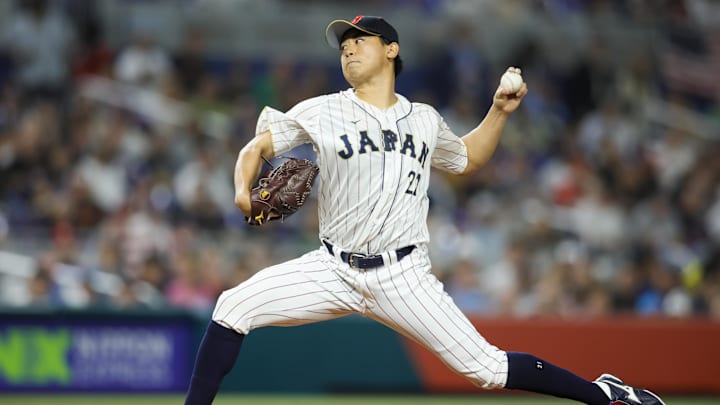Shota Imanaga
Last year, the Diamondbacks saw six pitchers start 15+ games for them. The non-Zac Gallen/Merrill Kelly pitchers owned a combined around 5.50 ERA. Fixing the rotation beyond Gallen, Merrill, and Brandon Pfaadt (if he can continue his results from the second half and Postseason) are going to be key to the Diamondbacks’ success next year. One of the top free agents hasn’t even thrown a pitch in MLB because he’s spent his entire career in Japan, and that’s left-hander Shota Imanaga.
Imanata pitched 159.2 innings last year, working to a phenomenal 2.59 ERA, 1.02 WHIP, and 7.83 K:BB ratio. The southpaw had a walk rate of just 3.8% and paired that with an outstanding strikeout rate of 29.5%. For reference, there have only been 14 pitchers since the Expansion Era, which started in 1961, with a K:BB ratio of 7.80 or greater in 150+ innings in MLB. The only real knock one could make on Imanaga’s season is his slightly below-average 1.02 HR/9 rate. But that’s a more than manageable rate.
Imanaga isn’t a flamethrower and sits around 93-95 MPH, but the fastball plays up because of its ability to ride through the zone. His two breaking pitches include a curveball and a cutter-slider. Imanaga throws two off-speed offerings, which are a sinker and a splitter. During the World Baseball Classic, Imanga’s stuff+ ratings were well above average, with some bordering into elite territory. Along with good offerings, he can throw everything for strikes quite often and can paint the black with ease. You don’t get a walk rate below 5% on control alone. He hits his spots with consistency.
Most have Imanaga making something similar to Kodai Senga, a five-year/$75 million deal. MLB Trade Rumors is slightly more generous in their prediction, having him signing for six years at $85 million. Both predictions put him making around $16 million a year. For a team that wants to compete, that should be within their price range.
